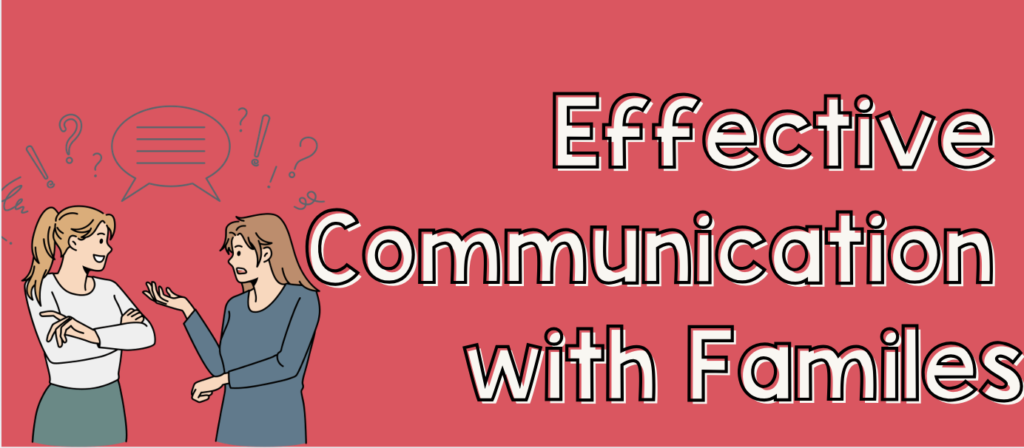Building strong relationships with families is essential for fostering a supportive and productive learning environment. When families feel connected to the classroom, students are more likely to thrive.
Here are some practical strategies for communicating effectively with families throughout the school year.
1. Establish Open Lines of Communication Early
At the beginning of the school year, set the tone for communication by introducing yourself and your teaching philosophy. Send home a welcome letter that outlines your goals, expectations, and preferred communication methods (email, phone calls, newsletters, etc.). This proactive approach helps families feel informed and valued from the start.
2. Utilize Multiple Communication Channels
- Different families have different preferences for communication. Use a variety of methods to reach out:
- Email: Great for detailed information and updates.
- Phone Calls: Personal touch for important conversations.
- Text Messaging Apps: Quick updates and reminders.
- Classroom Websites or Apps: Centralize information, assignments, and announcements.
By offering multiple options, you make it easier for families to stay engaged.
3. Regular Newsletters or Updates
Consider sending out weekly or monthly newsletters to keep families informed about classroom activities, upcoming events, and important announcements. Highlight student achievements, share curriculum updates, and provide tips for how families can support learning at home. This regular touchpoint keeps families in the loop and fosters a sense of community.
4. Host Family Events
Organize events that invite families into the classroom, such as open houses, family nights, or parent-teacher conferences. These gatherings provide an opportunity for face-to-face interaction and help build relationships. Make these events fun and engaging by incorporating activities that showcase student learning.

5. Be Proactive About Concerns
If issues arise, whether academic or behavioral, communicate with families promptly. Approach these conversations with empathy and a solutions-oriented mindset. Share your observations, listen to their perspectives, and collaborate on strategies to support the student’s success. Early intervention can prevent small issues from becoming larger concerns.
6. Encourage Two-Way Communication
Create opportunities for families to share their insights and concerns. Use surveys, suggestion boxes, or scheduled check-in calls to gather feedback. This two-way communication fosters trust and collaboration, showing families that their input is valued and appreciated.
7. Celebrate Student Achievements
Acknowledge student accomplishments, both big and small, and share these successes with families. Whether it’s a personal note, a shout-out in the newsletter, or a special phone call, celebrating achievements builds a positive atmosphere and encourages continued engagement.
8. Be Culturally Responsive
Recognize and respect the diverse backgrounds of your students’ families. Tailor your communication to be inclusive and culturally sensitive. If language barriers exist, consider using translation services or multilingual resources to ensure that all families feel included and understood.
9. Stay Consistent
Consistency is key to effective communication. Set a regular schedule for updates, and stick to it. Whether it’s weekly emails or monthly newsletters, families should know when to expect communication from you. This predictability helps build trust and reliability.
10. Reflect and Adapt
At the end of the school year, take time to reflect on your communication practices. What worked well? What could be improved? Solicit feedback from families about their experiences and adjust your approach for the following year. Continuous improvement will enhance your communication and strengthen relationships.
Conclusion
Effective communication with families is a cornerstone of a successful classroom environment. By establishing open lines of communication, utilizing multiple channels, and fostering a collaborative atmosphere, you can create a strong partnership with families that supports student learning and growth. Remember, the goal is to create a welcoming and inclusive environment where everyone feels valued and engaged!


